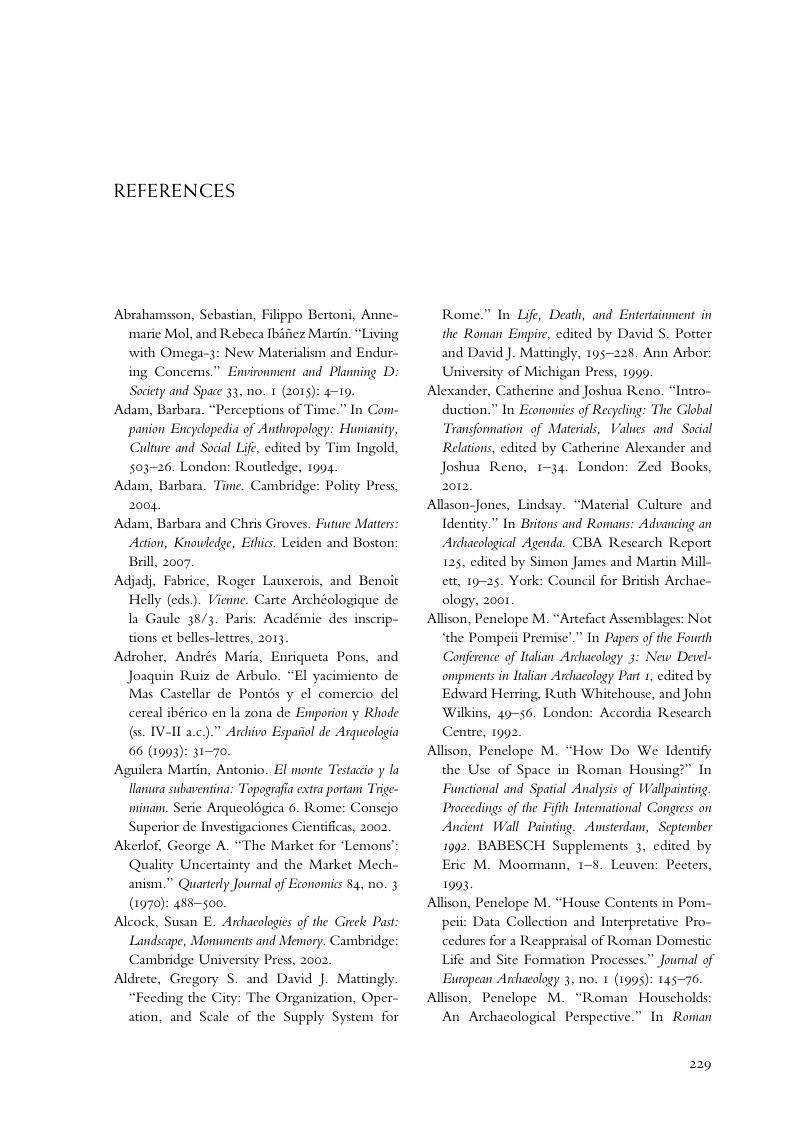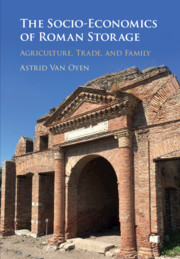Book contents
- The Socio-Economics of Roman Storage
- The Socio-Economics of Roman Storage
- Copyright page
- Dedication
- Contents
- Plates
- Figures
- Tables
- Preface
- One Surplus
- Two Needs/Wants (Matter): Villas in Central Italy
- Three Future (Practice): Silos and Granaries in Gaul and Iberia
- Four Knowledge (Assemblage): Houses in Pompeii and Herculaneum
- Five Control (Flow): Warehouses in the Ports of Ostia and Portus
- Six Reproduction (Scale): Family, State, and Accumulation
- Seven Epilogue
- Appendices
- Notes
- References
- Index
- References
References
Published online by Cambridge University Press: 06 May 2020
- The Socio-Economics of Roman Storage
- The Socio-Economics of Roman Storage
- Copyright page
- Dedication
- Contents
- Plates
- Figures
- Tables
- Preface
- One Surplus
- Two Needs/Wants (Matter): Villas in Central Italy
- Three Future (Practice): Silos and Granaries in Gaul and Iberia
- Four Knowledge (Assemblage): Houses in Pompeii and Herculaneum
- Five Control (Flow): Warehouses in the Ports of Ostia and Portus
- Six Reproduction (Scale): Family, State, and Accumulation
- Seven Epilogue
- Appendices
- Notes
- References
- Index
- References
Summary

- Type
- Chapter
- Information
- The Socio-Economics of Roman StorageAgriculture, Trade, and Family, pp. 229 - 280Publisher: Cambridge University PressPrint publication year: 2020



